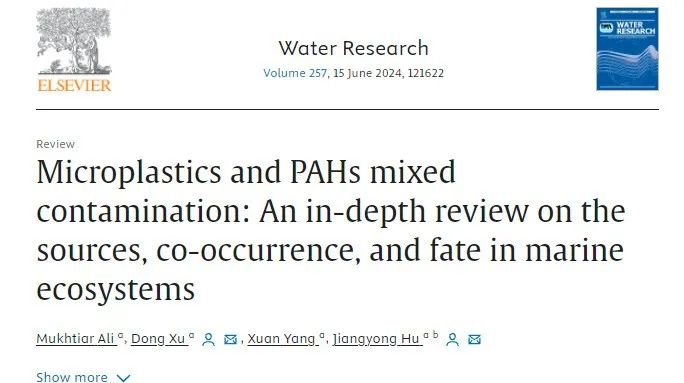Focusing on Marine Ecosystem Pollution Issues
A research team led by Professor Hu Jiangyong, the Chief Principal Investigator from the Energy and Environmental Nanotech Research Platform of NUSRI Suzhou, and her team members Mukhtiar Ali, Yang Xuan and Xu Dong have published their results as a review in Water Research. The research team delved into the mixed pollution of microplastics and polycyclic aromatic hydrocarbons in marine ecosystems, revealed the sources and co-existence mechanisms of these toxic pollutants, and provided a scientific basis for formulating effective marine environmental protection policies.

Microplastics (MPs) are plastic polymer fragments smaller than 5 mm diameter, which can easily pass through water filtration systems and pose a threat to marine life. With the increasing production and disposal of plastic products, coupled with inadequate recycling capabilities and the difficulty of degradation, microplastic pollution has become a severe environmental issue. While polycyclic aromatic hydrocarbons (PAHs) are a group of organic compounds that are formed during the incomplete combustion of fossil fuels, biomass, and other organic materials. These compounds are persistent and can have harmful impact on the marine ecosystem. At present, the mixed pollutants of PAHs and MPs have been widely detected in the marine ecosystem, which may cause internal and external damage and even death of marine organisms, which has a huge impact on the marine ecosystem.
The research team found that the chemical affinity between MPs and PAHs may be a key factor in their persistence in marine ecosystems. In addition, the team also explored various factors affecting the co-existence, chemical affinity, and distribution of the two pollutants, including environmental characteristics, microplastic properties, molecular weight and hydrophobicity of PAHs, and microbial interactions.
Although some studies have found that the photodegradation and biodegradation of pollutants are enhanced under mixed pollution conditions, however, current remediation strategies for the combined pollution of MPs and PAHs are still quite limited. The research team suggests that further investigation and development of effective remediation methods to remove pollutants from marine ecosystems are necessary to protect the marine environment and biodiversity.
This study not only deepens our understanding of the interaction between MPs and PAHs pollution in marine ecosystems, but also provides a scientific basis for the development of remediation technologies for the emerging pollutants and provides valuable scientific support and strategic guidance for global marine environmental protection work.




